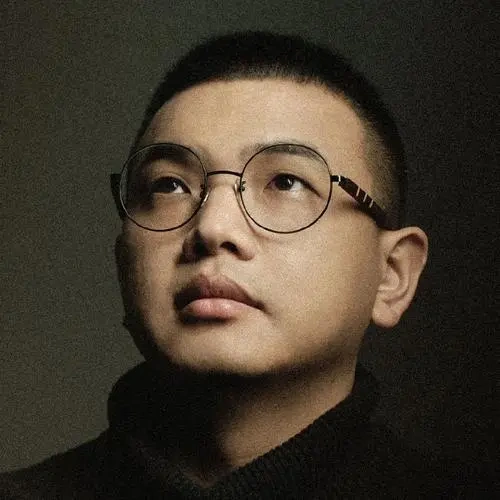What Zheng Qinwen’s Victory Reveals About China’s Economy?
More Chinese tennis talents like Zheng Qinwen will emerge in the future—it’s only a matter of time.
 Zheng Qinwen reacted to her audience. | Source: CFP
Zheng Qinwen reacted to her audience. | Source: CFP
Why?
Tennis was first invented in the French courts, and due to its high cost of participation, it has been known as a sport for the nobility.
 An illustration of a game of Real Tennis being played, circa 1500. |Source: CNN
An illustration of a game of Real Tennis being played, circa 1500. |Source: CNN
First of all, playing tennis requires a professional venue. Unlike badminton or football, you can’t just find an empty ground to play. Professional venues require correspondent maintenance, which is relatively expensive. Currently, the cost of renting a tennis court at around $14 per hour is quite common, with many charging $21 or even over $28. In contrast, badminton courts rarely exceed $14.
Secondly, professional equipment is needed. A decent, lightweight tennis racket can cost several hundred to several thousand dollars. When you add in other gear and expenses, spending over $14,000 a year is quite easy.
At present, the number of participants in tennis worldwide isn’t very high. As of 2021, the number of tennis enthusiasts globally (defined as those who play at least once a year) was just over 87 million. This number only accounts for about 1.5% of the world’s population, and the participation rate is not high because the cost is relatively high. With few participants and a limited potential market, practitioners have to increase the unit price to make money, which further hinders people’s participation.
The statement ‘tennis is a sport for the nobility’ may not be entirely accurate, but it is a fact that the overall cost of playing tennis is higher than that of most other sports. On a national level, this is reflected in the fact that tennis is most developed in the United States. While other countries may have one or two top players, the U.S. has a bunch. In terms of the number of professional tennis players, the U.S. accounts for 10% of the world’s total, making it the country with the highest proportion.
Supporting the large number of tennis players in the U.S. is the country’s economic level, which allows more people to afford the sport. In 2021, there were 25 million tennis enthusiasts in the U.S., the highest number in the world.
 Top seven countries in the world in terms of number of tennis players in 2021 |Source: ITF Global Tennis Report 2021
Top seven countries in the world in terms of number of tennis players in 2021 |Source: ITF Global Tennis Report 2021
Beyond the United States, there’s also Europe, which is similarly developed. In the past, when watching tennis matches, I noticed that there were indeed many European tennis players, such as Henin, Hingis, Sharapova, Djokovic, Nadal, and so on. Later, I found out that European tennis professionals account for 60% of the world’s total.
In other words, the number of professional tennis players in the U.S. and Europe (including Russia and Belarus) combined accounts for 70% of the world’s total.
As for the professional tennis players coming from developing countries, their families are relatively well-off. For example, Argentina’s Juan Martín del Potro comes from a middle-class family, with his father being a veterinarian and his mother a teacher. India’s Sania Mirza, who has won six Grand Slam doubles titles, has a father who was a sports journalist and later became a magazine publisher with various other businesses. While not as wealthy as billionaires like Ambani or Adani, her family is still considered affluent.
Most tennis players come from developed economies, and those from developing economies typically start from a middle-income background. This clearly illustrates that the overall cost of playing tennis is high. Without financial support, it’s challenging to pursue the sport.
When it comes to Zheng Qinwen, she worked with exceptional coaches such as Carlos Rodriguez (Henin’s coach), Pere Riba (a former professional tennis player with the highest world ranking of 65), and some Chinese tennis athletes in her early years of training. Renowned and professional coaches are expensive. Reports indicate that during her youth, Zheng Qinwen’s annual training expenses alone exceeded $70,000. This is just the direct cost; there are also numerous indirect expenses such as nutrition. Her father, Zheng Jianping, was a former track and field athlete who later went into business and had a good financial situation. Even so, they once considered selling their house, highlighting the immense financial pressure.
 Zheng Jianping, Zheng Qinwen’ s father |Photo: Xinhua News Agency
Zheng Jianping, Zheng Qinwen’ s father |Photo: Xinhua News Agency
In the past, when China’s economy was underdeveloped, few could afford to play tennis, and the country relied on a national sports system to cultivate players like Li Na. It wasn’t until the economy improved and more people could afford the sport that players like Zheng Qinwen emerged. She is just the beginning; there will be more players like her in the future.
Take the number of tennis participants as an example. In 2021, the number of enthusiasts in China reached 19.92 million, second only to the United States.
Sports, like the economy, rely on the principle of scale. When the scale is large and more people participate, competition drives improvement. While having more people doesn’t necessarily guarantee progress, a lack of participants certainly hinders it. This is a fundamental rule.
I’ve said countless times that the lack of progress in Chinese football stems from the fact that too few people play the sport. There’s no competition, and without the drive to improve, players can slack off without consequence. Factors like ethnicity and corruption are secondary. Argentina’s football association has been notoriously corrupt, almost like a mafia, yet that hasn’t stopped them from winning world championships. If the number of people involved in Chinese football remains insufficient, even ten rounds of anti-corruption efforts on the football association will be meaningless.
Tennis in China has clearly become highly competitive. Thanks to a large grassroots base, by 2022, China had 4,362 professional tennis players. Considering that the total number of active professional tennis players worldwide is just over 10,000, China accounts for 40% of the total global number. Even if the quality of training isn’t perfect, with so many professionals competing with each other, some top players will inevitably emerge. Even if Chinese football players made up only 4% of the world’s total, qualifying for the World Cup wouldn’t be out of the question.
In addition, the cost of Zheng Qinwen’s training model is not entirely borne by the family, but a standard “mixed model”. In other words, other than the part borne by the family, the state also provided some subsidies and resources. Her earliest team was built by the Wuhan Sports Bureau.
China’s sports model has long relied on the ‘nationwide system,’ where the state provides funding to cover athletes’ living expenses, allowing them to focus solely on training and competition. However, this approach has its drawbacks. Due to limited state funding, only a select few athletes receive resources, leading to a situation where only the top talents are supported, but there aren’t enough resources for the promotion of the sport. Most ordinary trainees are left behind. If the top athletes retire and no one is ready to step up, it can lead to a gap in talent cultivation.
At the same time, the ‘nationwide system’ often involves long-term centralized training, which is difficult for the younger generation with strong individuality to accept. Moreover, since the state invests heavily in athletes and covers all their needs, athletes are required to turn over most of their earnings as a form of exchange, inevitably leading to serious conflicts of interest.
Another major drawback of the system is its high-stakes nature. Most resources are concentrated on a few individuals, with the expectation that they will win gold and silver. However, the problem is, what if they don’t achieve good results? After all, sports competitions are unpredictable, and winning or losing can often seem like a matter of luck. The unexpected is a constant on the field.
The difference between the ‘mixed model’ and the ‘nationwide system’ is that while the state still provides funding and resources, these are no longer concentrated on a single athlete. Instead, resources are distributed as evenly as possible, so everyone receives some support. For example, not only did Zheng Qinwen receive help in assembling a coaching team, but many other young tennis players also received similar support.
There’s no longer an emphasis on selecting only the top talents, nor are athletes required to hand over their earnings. Instead, the focus is on providing basic resources as evenly as possible, while athletes are responsible for meeting their advanced needs themselves. This includes finding more specialized coaches, seeking out competition opportunities, and so on. Success then depends largely on their own efforts and luck. This is known as the ‘mixed model.
In a word, as China’s economy has developed and resources have increased, more people are able to afford tennis, so there’s no need to focus solely on the top talents. It’s entirely possible to cast a wider net.
The benefits of the ‘mixed model’ are evident. Athletes bear their own costs, avoiding conflicts of interest; there is no need for long-term, closed training camps, which suit the individuality of the younger generation. With a sufficiently large base, some talentss will inevitably stand out.
If that’s the case, why not fully marketize and completely say goodbye to the nationwide system? In fact, the mixed model’ is the most suitable for China’s current reality.
Among professional tennis athletes, fewer than 4,000 players can earn prize money. Sixty percent of them receive nothing at all, as it requires reaching a certain ranking to win any. Most players either get eliminated in the first round or struggle to make it to the main draw. Even among those who do earn prize money, the situation is not promising. Fewer than 1,000 players in the entire professional tennis world break even, meaning over 90% of players are operating at a loss. The problem remains that expenses are too high.
Top tennis athlete requires a team for support. A complete team typically includes a fitness trainer, doctor, nutritionist, coach, sparring partner, and public relations manager. All of these expenses are borne by the player, which creates immense pressure. Zheng Qinwen, for example, spends around $420,000 annually just to compete in Europe. To achieve good results, a top-tier team is essential, and these costs cannot be avoided.
Tennis is a highly commercialized sport, with players in the four Grand Slam tournaments attracting significant attention each year. The prize money from various events and the corresponding commercial sponsorships are also quite substantial. Even so, breaking even remains out of reach for most tennis players. So, what about sports that are less commercialized and offer lower earnings than tennis? Their situation is only more difficult.
In 2023, Zheng Qinwen’s income reached $7.2 million, with over $1 million coming from prize money and the rest from endorsements and sponsorships. She ranked 15th on the ‘World’s Highest-Paid Female Athletes’ list that year. However, she is ultimately an exception. For the vast majority of Chinese athletes, even earning a fraction of $7.2 million is extremely difficult. Without state support and resources, it would be hard to sustain their careers. This is why the ‘mixed model’ is still necessary.
 Chagee, a famous Chinese tea-drink brand, signed a partnership with Zheng Qinwen as early as April 26th this year. After she won the Olympics gold medal, the brand ran celebratory ads on outdoor billboards across China. |Photo: Chagee’s Weibo
Chagee, a famous Chinese tea-drink brand, signed a partnership with Zheng Qinwen as early as April 26th this year. After she won the Olympics gold medal, the brand ran celebratory ads on outdoor billboards across China. |Photo: Chagee’s Weibo
In recent years, the biggest debate in Chinese sports has been about which path to take: full marketization or a return to the nationwide system. The reverse is unlikely—not only because of the issue of performance but also because the younger generation can no longer tolerate long-term, closed training camps, which are out of time. However, due to fluctuations in performance during Chinese sport’s transition, some people believe that everything would improve if we returned to the old system.
Once a transition begins, there’s no turning back. However, figuring out how to move forward and where the path leads is a challenge. The ‘mixed model’ offers valuable insight, showing that the two modes can be made compatible through reform. It’s entirely feasible to walk on both legs: letting the market handle what belongs to the market, and allowing the nationwide system to manage what it does best. It’s like the economic system—if everything were state-owned, there would be no vitality; if everything were privately owned, it would be too harsh and lack a safety guarantee. The best approach is to have both, complementing each other.
Since it’s possible to walk on both legs, there’s no need to insist on just one path.




